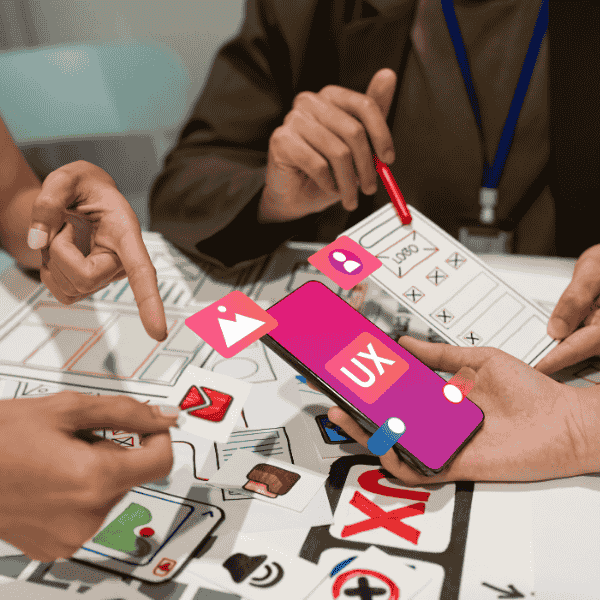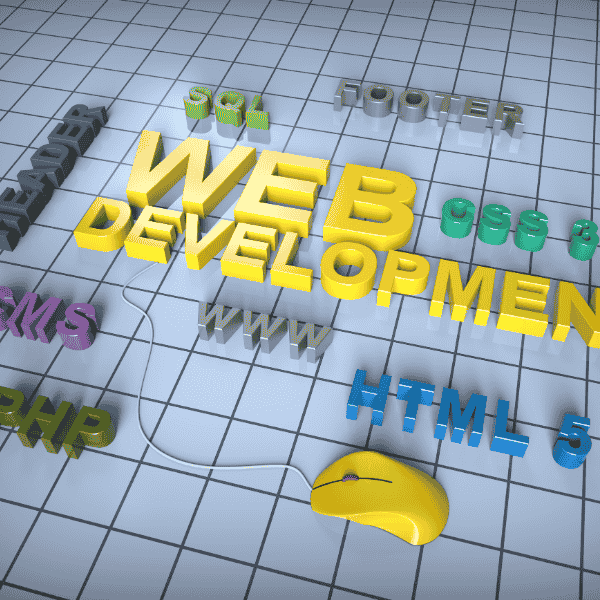What Is a Persona Website and Why Do You Need It?
Persona website is a site planned and written to satisfy distinct user types that you’ve researched, not imagined. Each page answers a job, removes a friction, and leads to a next step you can actually measure.
Exploring the concept of persona website design
Persona website design turns research into practical decisions about structure, language, and flows. Instead of “the user,” you work with a few grounded profiles that represent real goals and pain points. Teams remember stories, not spreadsheets, which is why personas improve team focus and continuity across sprints.
Personas only help when they come from evidence. Interviews, observations, and data triangulation produce patterns that become stable enough to model. That model guides navigation labels, content hierarchy, and which components deserve space above the fold. Done right, the site starts reading like it was written for me, not for a committee.
Key advantages for startups and enterprises
Personas reduce rework by aligning design and copy early around shared mental models. Sales and success teams gain a common language to qualify leads and explain trade-offs. Engineering gets clearer acceptance criteria because flows show what “done” truly means, not just pixels. Over time, personas make customers more memorable, which guards against random feature drift.
How Do You Research and Build Accurate Personas for Your Website
Research starts by listening, watching, and quantifying real behavior. You collect stories first, numbers second, then reconcile both into lean, testable profiles.
Using surveys and interviews to understand user needs
Interviews uncover motives and context that analytics alone cannot reveal. Surveys help estimate reach and variance once you know which questions matter. Start with open prompts such as “Describe the last time you…” and keep digging for concrete steps, tools, and constraints. Patterns you hear three times from independent users usually deserve a sticky note.
Notes should capture goals, pains, triggers, and success signals in users’ own words. Lightly quantify frequency and severity so prioritization feels honest, not hand-wavy. Small mishearings creep in easily, so record sessions and get transcripts if possible. My quick tip from projects: re-ask important points later in the chat to test consistency.
Segmenting your audience for optimal persona creation
Segmentation groups users by goal similarity and behavior, not vanity demographics. Role, task complexity, purchase frequency, and risk tolerance usually sort people into clusters that can drive design choices. Keep personas lean, one page each, or teams stop using them because they feel like homework.
Segments should map to different site paths. A compliance-driven buyer wants proofs and SLAs upfront. A hands-on evaluator wants docs, trials, and change logs. Both might share a landing page, yet diverge fast after the first click. That fork is the moment where your IA earns its keep.
Gathering insights from analytics and feedback
Analytics confirm where real behavior departs from what people say. Heatmaps, funnel steps, and search terms point to mismatched labels or hidden intent. Feedback widgets capture moments of confusion that interviews missed. Use both streams to refine tasks, thresholds, and copy that your personas will bring back to life.
Quant should never fabricate a persona. It enriches one. Dashboards highlight where to watch sessions, not what to build next. Keep that boundary clear, or personas drift into averages that help no-one.
What Are the Essential Elements of Effective Persona Website Development
Effective persona website development turns persona insights into content, structure, and feedback loops. The site then acts like a conversation that stays on topic.
Integrating user goals and pain points into website design
Translate each primary goal into a top-level task with a visible starting point. If “compare pricing by use-case” is a core job, place a comparison entry in the main nav and repeat it at relevant CTAs. Pain points become design constraints: shorten forms where speed matters, add proof where risk feels high, surface chat where stakes feel fuzzy.
A small JSON spec keeps teams aligned during build. We use a lean pattern like this:
{
"persona": "Operations Evaluator",
"top_tasks": ["Assess TCO", "Validate security", "Pilot with sample data"],
"risks": ["Migration downtime", "Vendor lock"],
"page_promises": {
"/pricing": "Compute honest TCO by workload",
"/security": "Map claims to controls with evidence",
"/trial": "Start in 5 minutes without credit card"
},
"success_signals": ["Clicked cost calculator", "Downloaded SOC report", "Trial started"]
}
Crafting personalized site journeys for each persona
Journeys change where content starts and what proof shows early. Evaluators need hands-on paths with setup time and limits stated clearly. Economic buyers need ROI framing, legal comfort, and SLAs close by. Do not create parallel sites; create conditional entry points and flexible modules that re-order content around intent.
Micro-copy should mirror phrases users used in research. If people say “invite my accountant,” avoid “add collaborator.” These small mirrors build trust quicker than colorful banners. Typos happen, but consistency must win, or journeys feel stitched not shaped.
Maintaining brand consistency while personalizing experiences
Brand anchors—voice, typography, color, and motion—stay stable across journeys. Personalization changes emphasis, not identity. Guardrails live in a design system that explains when a component can swap content or layout safely. Copy guidelines document tense, reading level, banned fluff, and which claims require sources. Teams ship faster when those rails exist.
How Can Persona Website Improve User Experience and Engagement
Persona websites improve UX by aligning navigation, copy, and interaction to a user’s immediate job. Engagement rises because users stop working around the site and start working with it.
Enhancing navigation based on persona preferences
Navigation clarity grows when labels match task verbs from interviews. Group items by outcome, not internal org charts, and keep signposts consistent page to page. Secondary nav can be persona-specific if it shortens common loops, like jumping from “Compare plans” to “Show procurement docs.” Small reductions in pogo-sticking signal better alignment.
Search queries on your site are gold for renaming unclear items. If many users type “audit log,” burying that feature in “observability” hurts trust. Rename the label and watch exits fall. Tiny fix, real gain.
Solving user pain points with targeted design choices
Design changes should address a defined friction per persona. If a persona worries about risk, embed checklists, certifications, and third-party links near CTAs. If speed matters, prefill forms, remember choices, and expose clear start times. Evidence earns clicks more than adjectives. My rough rule: remove one step for every two added benefits.
What Are Best Practices for Persona Website Development Success
Success comes from disciplined research, transparent decisions, and shared ownership. Fancy tooling can help, yet the habits move the needle.
Keeping personas authentic and research-driven
Authenticity shows when persona statements trace back to transcripts or observations. Keep a source column for every claim. Trim decorative details that never influence design. Personas should change only when new research or strong behavioral data says so, not when a stakeholder gets impatient.
Internal reviewers should be invited to challenge anything that lacks a source. That small ritual stops groupthink early. It also builds trust in the artifacts, which keeps them alive past launch.
Using real user stories to guide website decisions
Stories turn into requirements when they include context, trigger, behavior, and outcome. “During onboarding, I paused because the pricing unit confused me” maps to “Define the unit in the field label and show a sample calculation.” Stories like this anchor acceptance tests and content edits. Over time, they read like a living style guide.
Involving stakeholders in persona creation and validation
Stakeholders own parts of the journey—sales, success, compliance—and bring risks you might miss. Invite them to pairing sessions for affinity sorting and review. Present personas as bets with evidence, not as tablets from the mountain. That framing keeps feedback specific and much less political.
How Do You Validate and Evolve Personas Over Time
Personas must evolve with product, market, and channels. A stable update rhythm protects quality while avoiding thrash.
Reviewing and updating personas based on user feedback
Post-launch feedback tells you where assumptions broke. Watch trial abandonment reasons, sales objections, and support themes. When the same issue repeats across channels, rewrite the persona’s pains or goals, then update the journey and acceptance tests. Treat small fixes weekly and big rewrites quarterly to avoid stale docs.
Monitoring trends to keep personas relevant
New regulations, pricing models, or device shifts can change tasks and anxieties. Track release notes from key platforms you integrate with, and scan credible design research digests. If a trend alters your users’ environment, reflect it in the persona notes and page promises quickly, not next year.
Aligning personas with changing business goals
Strategy pivots demand persona checks. If your motion shifts from PLG to sales-led, buyer personas step forward and evaluator personas take a different path. Re-sort navigation, rewrite CTAs, and adjust proof points so incentives line up again. Keep one doc listing which metrics each persona is expected to move.
What Tools and Templates Help Streamline Persona Website Projects
Tools save time only after your method is clear. Choose those that help you see patterns faster and share artifacts widely.
Platforms for efficient persona and user journey mapping
Figma, UXPressia, and lightweight whiteboard tools support templates, journey maps, and exports that non-designers can read. A shared board reduces handoffs and encourages quick alignment during copy or IA debates. Templates from credible libraries freshen your structure when teams get stuck repeating teh same shapes.
Airtable or Notion work well for evidence repositories. Fields for quote, behavior, and source link speed up reviews. Data hygiene keeps personas honest when memory gets rosy.
Templates for presenting personas to your team
One-page, scannable layouts beat ornate posters. Start with a goal summary, top tasks, key pains, and success signals. Keep biography light unless it impacts decisions. Add a sidebar with page promises that your site must keep. That last part turns the slide from a portrait into a contract teams can build against.
How Can You Measure Persona Website Project Success
Measurement proves whether the site works for the people you designed for. Choose metrics that reflect real progress for each persona.
Key performance metrics for ongoing evaluation
Define one primary conversion and a few leading indicators per persona. Examples include trial start rate for evaluators, demo booked for economic buyers, and time-to-first-value inside the product. Heatmap scroll depth and query success on search help diagnose content gaps without guessing. Evidence-based tweaks beat redesign theatre.
Tie metrics back to page promises from your JSON spec. If a promise under-delivers, fix the content, not just the color. Over weeks, your dashboards start telling a cleaner story.
Using customer feedback to guide enhancements
Feedback loops turn subjective opinions into ranked work. Short surveys on key pages, structured success calls, and tagged support tickets give you a steady stream of signals. Publish a monthly note summarizing what changed and why. That transparency fosters patience when experiments need more time than we hoped.
Common Questions About Persona Website Development
People often ask how many personas is enough. Two to four primary profiles usually cover most traffic while staying workable for teams. More than five risks dilution and content churn. Another frequent worry is “Will personalization break brand?” It won’t if you keep guardrails clear and change emphasis, not identity.
Teams also ask where to start when resources feel thin. Begin with a proto-persona built from best available evidence, then plan a validation sprint. Even rough personas beat blank pages during IA and copy work. Just don’t fall in love with the first draft; treat it like a testable bet.
Final Checklist Before Launching Your Persona Website
Launch readiness improves when you check evidence, journeys, and measurements together. Below is a concise, scannable list that mirrors the way teams work under time pressure.
CONCLUSION
Persona websites pay off because they compress confusion into clarity. Research informs a few real profiles. Journeys translate profiles into pages and proof. Tests verify outcomes rather than tastes. Our team at Epistic follows this pattern on client work where we own UX, copy, and analytics wiring; the method holds even when budgets are modest.
Review provided reference site: internal guides on UI vs UX and white-label delivery help readers dive deeper into structure and execution. We linked them below only where they enrich a choice, not as random plugs.
If you want a site that reads like it knows your customers, we can help. We handle research, lean persona modeling, IA, and copy with analytics baked in.
FAQs
How to choose the right layout for a persona website?
Choose a layout that matches top tasks for each persona. Map the first-click to the most common job, then place proof and next steps within one scroll. For an evaluator persona, lead with tasks like “try” and “docs,” while a buyer persona needs ROI and assurances above the fold.
Steps To Create:
1. List top tasks by traffic share
2. Align first-click to each task
3. Place proof near risky choices
4. Keep one scroll to a decision
What are the benefits of creating detailed user personas?
Detailed personas reduce rework and clarify decisions across design, product, and sales. Teams stop arguing taste and start checking evidence. Meetings shrink because goals, pains, and success signals live on one page that everyone trusts and uses during planning. Use brevity, not flair, or people stop reading.
How can persona development improve website engagement?
Persona development improves engagement by aligning navigation labels, content order, and CTAs to real jobs users came to finish.
Clear fits reduce pogo-sticking and search retries, which shows up in lower exits and deeper scroll. Keep measuring and keep removing dead ends that interviews and heatmaps reveal.
What are common mistakes in building a persona website?
Common mistakes include inventing personas from analytics alone, bloating bios with trivia, and launching without page-level promises to keep. Teams also over-personalize and fracture brand. Keep personas research-backed, one page, and wired to a small set of tests that prove value.
How to measure success in a persona website strategy?
Define one primary metric per persona and wire it before launch. Examples include trials started, demos booked, and time-to-first-value.
Use scroll depth and internal search success as leading indicators to debug content. Publish monthly notes explaining what changed, why, and what comes next.






